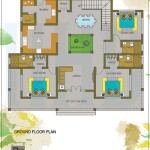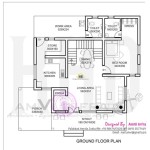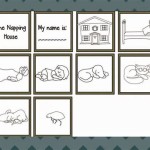Personal Emergency Evacuation Plan Template for Care Homes: Ensuring Resident Safety
Care homes are responsible for the safety and well-being of their residents, many of whom have mobility limitations, cognitive impairments, or other conditions that require specialized assistance during emergencies. A cornerstone of this responsibility is the development and implementation of Personal Emergency Evacuation Plans (PEEPs). These plans are individualized strategies designed to ensure the safe and timely evacuation of each resident in the event of a fire, natural disaster, or other hazardous situation. A well-crafted PEEP template serves as a crucial tool in standardizing and streamlining this vital process.
The purpose of a PEEP is not just to document potential evacuation needs, but to proactively identify specific challenges a resident might face and outline practical solutions. This necessitates a collaborative approach, involving the resident (if possible), their family or legal guardian, care staff, and potentially other healthcare professionals. The template should prompt consideration of various factors, leading to a comprehensive and actionable plan.
The successful implementation of PEEPs depends on clear, concise, and accessible documentation. A PEEP template provides a structured framework for gathering and organizing critical information, ensuring that all relevant details are readily available to staff during an emergency. Furthermore, regular reviews and updates are essential to reflect changes in a resident's condition, mobility, or cognitive abilities.
Key Components of a PEEP Template for Care Homes
A comprehensive PEEP template should encompass several key sections to adequately address the unique needs of each resident. These sections should be clearly labeled and organized for ease of use and efficient information retrieval during an emergency.
1. Resident Identification and Background Information: This section should include the resident's full name, date of birth, room number, and any relevant medical conditions or allergies. It should also contain contact information for their designated emergency contact person(s), including phone numbers and addresses. Additionally, include a recent photograph of the resident to aid in identification during an evacuation.
2. Assessment of Mobility and Cognitive Abilities: This is a critical section that details the resident's physical and cognitive limitations that could impact their ability to evacuate independently. It should include specific details regarding their walking ability (e.g., uses a cane, walker, wheelchair), transfer ability (e.g., requires assistance with sit-to-stand, uses a mechanical lift), and ability to follow instructions. Cognitive impairments such as dementia or confusion should also be documented, along with strategies for effective communication and redirection during stressful situations. This section might also include information about sensory impairments, such as hearing or vision loss, and how these impairments should be accommodated during an evacuation.
3. Evacuation Assistance Requirements: Based on the assessment of mobility and cognitive abilities, this section outlines the specific assistance the resident will require during an evacuation. This may include the number of staff members needed, the type of equipment required (e.g., wheelchair, evacuation chair, carrying sheet), and the preferred method of communication. The plan should clearly state who will be responsible for providing this assistance, including primary and secondary staff members. This section should also address any specific medical equipment or medications the resident requires that must be taken during the evacuation, such as oxygen tanks or emergency medications like EpiPens.
Essential Elements for Effective PEEP Implementation
Beyond the template itself, the success of PEEPs hinges on several factors related to training, drills, and consistent adherence to protocols.
1. Staff Training and Education: Care home staff must be thoroughly trained on the purpose and implementation of PEEPs. This training should include understanding the specific needs of each resident, proper use of evacuation equipment, and emergency communication procedures. Regular drills and simulations are crucial for reinforcing training and ensuring that staff can effectively respond during an actual emergency. These drills should be varied to simulate different scenarios and challenges. Training records should be meticulously maintained to document staff competency and identify areas for improvement. The training should also cover the legal and ethical obligations related to resident safety and emergency preparedness.
2. Regular Review and Updates: PEEPs are not static documents. They must be regularly reviewed and updated to reflect changes in a resident's condition, mobility, cognitive abilities, or medication regimen. At a minimum, PEEPs should be reviewed annually, or more frequently if significant changes occur. Family members or legal guardians should be involved in the review process to provide valuable insights and ensure that the plan accurately reflects the resident's current needs. All updates should be clearly documented and communicated to all relevant staff members.
3. Communication and Documentation: Clear and consistent communication is essential for effective PEEP implementation. PEEPs should be readily accessible to all staff members who are responsible for the resident's care. This may involve storing the plans electronically or in a designated binder at the nursing station. A standardized documentation system should be in place to track the review and updating process, as well as any specific incidents or challenges encountered during evacuation drills or actual emergencies. This documentation can be used to identify areas for improvement and refine the PEEP template and procedures over time. Furthermore, it is important to communicate the PEEP to emergency services personnel, particularly if the care home uses specialized evacuation methods or equipment.
Specific Considerations for Different Resident Needs
The PEEP template should be flexible enough to accommodate the diverse needs of residents with varying levels of physical and cognitive abilities. Specific considerations should be given to individuals with mobility limitations, cognitive impairments, sensory impairments, and medical conditions.
1. Residents with Mobility Limitations: For residents who use wheelchairs or have difficulty walking, the PEEP should specify the type of equipment needed for evacuation, such as an evacuation chair or carrying sheet. The plan should also identify designated safe areas within the facility where these residents can be temporarily moved if a full evacuation is not immediately possible. Consider the width of doorways and hallways to ensure accessibility for wheelchairs and other assistive devices. The PEEP should also clearly indicate the number of staff members required to safely assist the resident during an evacuation.
2. Residents with Cognitive Impairments: Residents with dementia or other cognitive impairments may require specialized communication strategies during an evacuation. The PEEP should outline specific techniques for calming and reassuring these residents, such as using simple language, maintaining eye contact, and providing familiar objects or comfort items. The plan should also identify staff members who have a strong rapport with the resident and can effectively communicate with them during a stressful situation. Consider using visual cues, such as pictures or symbols, to guide the resident to safety. The PEEP should also address the potential for wandering or disorientation during an evacuation and outline strategies for preventing these behaviors.
3. Residents with Sensory Impairments: For residents with hearing loss, the PEEP should specify the preferred method of communication, such as writing notes or using sign language. The plan should also ensure that the resident's hearing aids are readily available during an evacuation. For residents with vision loss, the PEEP should outline strategies for providing verbal guidance and tactile cues to help them navigate the evacuation route. Ensure that the evacuation route is well-lit and free of obstacles. The PEEP should also identify staff members who are knowledgeable about the resident's specific sensory impairments and can effectively communicate with them during an emergency.
4. Residents with Medical Conditions: The PEEP should address any specific medical needs of the resident, such as oxygen therapy, medication requirements, or other medical equipment. The plan should clearly indicate which medications and equipment must be taken during the evacuation and who is responsible for ensuring that these items are brought along. The PEEP should also include information about the resident's medical history and allergies, in case emergency medical personnel need to provide treatment during the evacuation. Consider having a designated "go-bag" that contains essential medical supplies and medications for each resident.
By carefully considering these factors and incorporating them into the PEEP template, care homes can significantly enhance the safety and well-being of their residents during emergencies. Ongoing evaluation and refinement of the PEEP process are essential for continuous improvement and ensuring that all residents receive the support they need to evacuate safely and efficiently.

8 Home Evacuation Plan Templates Ms Word

11 Evacuation Plan Templates In Google Docs Word Pages

Emergency Plan 36 Examples Format How To Make

Home Evacuation Plan Template Beautiful Free Fire Floor For Emergency Action
Fire Evacuation Plan Care Home Template
Fire Evacuation Plan Care Home Template

8 Home Evacuation Plan Templates Ms Word

8 Home Evacuation Plan Templates Ms Word

Family Emergency Plan Template Preppers

11 Emergency Evacuation Plan Templates Sample Example Word Google Docs Apple Pages Format








